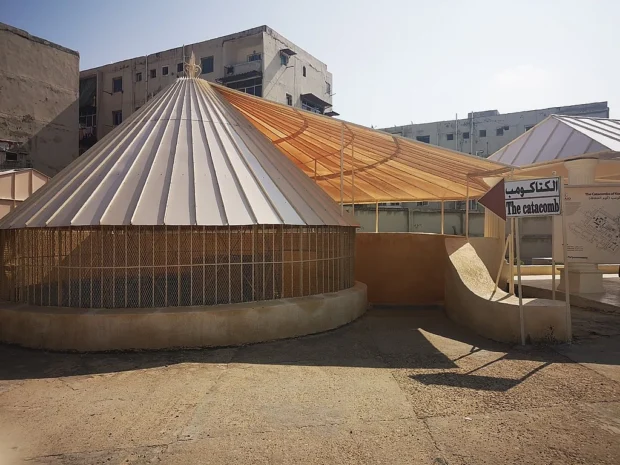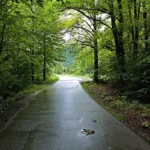Alexandria is a city full of history and charm along the Mediterranean Sea. Its warm weather and blue waters make it a great place to visit most of the year. Many travelers come to Alexandria Egypt to enjoy beautiful sea views, old buildings, and tasty food. Walking in this city feels like stepping into a storybook. The streets tell stories of ancient times and new adventures. In this guide, I will share my personal impressions, tips about famous landmarks, local foods, and how to get around easily.
Table of Contents

Famous Alexandria Landmarks to Visit
One of the best-known places is the Bibliotheca Alexandrina. It is not the old library of ancient times, but a modern and big library built to remember it. The building looks like a giant tilted disk reaching the sky. Inside, there are millions of books and some interesting museums. I spent hours walking between quiet halls full of knowledge.
For travelers enjoying Mediterranean coastal cities, Monaco offers a contrasting blend of glamour and peaceful corners that complements Alexandria’s rich history.
To complement your visit to Alexandria’s well-known landmarks and gardens, consider a journey beneath the city streets to the Catacombs of Kom El Shoqafa, where a unique mix of cultures and ancient art awaits history fans.

Next, I walked along the Corniche, the long road by the sea. The sea breeze was cool, and I saw fishermen working early in the morning. Many families and young people gather here to chat and enjoy the views. Near the Corniche, the Qaitbay Citadel stands strong on the shore. This fortress was built in the 15th century using stones from the old Lighthouse of Alexandria, one of the seven wonders of the ancient world. You can climb around and see the blue sea from every side.

Don’t miss the Montaza Palace gardens. The gardens cover a large green area with beautiful flowers and palm trees. It feels peaceful compared to the busy city streets. Families come here on weekends for picnics and to enjoy the cool shade.

Taste of Alexandria: Food and Flavors
Every meal in Alexandria was a small celebration for my taste buds. The city is famous for its seafood because it sits right on the Mediterranean coast. I tried grilled fish with spices in the local markets of Attarine district. The fish was fresh and soft, and the spices made it rich in flavor. Another favorite dish is called “Feteer meshaltet.” This is a kind of flaky layered bread often served with honey or cheese. I had it first thing in the morning while sitting at a small café.

Alexandria is also known for its street food. Falafel here tastes a bit different from other places-made with fava beans and deep-fried till golden. The city’s fish sandwiches sold near the port are popular among locals and visitors alike. I also enjoyed a sweet called “Om Ali,” like a warm bread pudding with nuts and cream. You can find it in many dessert shops, especially in the Raml district, which is famous for its cafés and bakeries.
For those curious about other historic monuments around Alexandria, taking a moment to visit Pompey’s Pillar near the sea adds a striking Roman landmark to your itinerary, enhancing your appreciation of the city’s rich past.

Getting Around Alexandria Egypt Quickly
When arriving at Borg El Arab Airport, the city center is about 40 kilometers away. The best public transport to the city includes buses and minibuses. They stop often and are affordable. For moving inside the city, trams offer a nostalgic way to explore neighborhoods. They run mostly along the coast and give a view of daily life.

Walking is probably the best way to feel the city’s heart. Many landmarks are close to each other, and lively markets invite you to stop and look around. It is good to keep a map handy or use a phone with GPS, as some streets can be a little confusing at first.

Alexandria Customs and Local Etiquette
People in Alexandria speak Arabic, but many understand English, especially younger ones. A friendly greeting is “Salam Alaikum” which means “Peace be upon you.” Locals reply with “Wa Alaikum Salam.” When you enter homes or shops, it is polite to say “Min fadlak” (please) and “Shukran” (thank you).

Dress modestly and respectfully, especially when visiting religious sites. Many places expect visitors to remove shoes before entering. Public displays of affection are rare and sometimes frowned upon, so it is best to keep interactions polite and quiet in public.

Alexandrians are warm and helpful. I met a man at the tram stop who invited me to a local bakery for tea and told stories about the city’s past. Sharing a small meal or cup of tea is common when making new friends here.
Side Streets and Secret Corners
While Alexandria is famous for its big sights, the true charm lies in small alleyways and neighborhoods. I wandered through El Attarine district and found tiny cafés with old wooden chairs and walls covered in photos from the 1950s. The smell of fresh bread filled the air, mixing with sea salt. In the evenings, the sounds of street musicians playing traditional songs make the city feel alive in a soft way.
A quirky fact: the city has some old Roman ruins hidden between modern buildings. Many visitors only see the main museums, but if you look carefully, you find parts of old walls, columns, and even a small amphitheater. Ask locals for directions; they love showing these “secret” spots.
Where to Stay in Alexandria Egypt
Choosing a place to stay depends on what you want to do. If you like to be near the sea, look for guesthouses near the Corniche or near the Eastern Harbor. They let you wake up to the sound of waves and views of fishing boats. For those who enjoy busy markets and cafés, the city center or Raml district offers many options.
Sometimes small family-run guesthouses give a more personal touch than large hotels. Hosts often share stories about the neighborhood and suggest places to see and eat. Staying with locals is a great way to feel part of the city.
Alexandria’s Past and Present Blend
Walking through Alexandria feels like diving into a story about kings, poets, and sailors. The city was founded by Alexander the Great over 2,300 years ago and quickly became a center of learning and culture. The famous lighthouse, once one of the tallest structures in the world, guided ships safely to shore. Today, parts of its stones live on in the Citadel of Qaitbay.
One surprising thing: Cleopatra, the queen of Egypt, spent time here, and the city’s mix of Egyptian, Greek, and Roman cultures can still be felt. I visited the Graeco-Roman Museum, which holds many beautiful statues and artifacts that tell stories of that era. The layers of time are visible everywhere.

A digital nomad exploring cities across the globe, with a passion for local street food and hidden cafes.
- Alexandria – Egypt by David Evers from Amsterdam, Netherlands on Wikimedia Commons – cc by 2.0
- Alexandria library 2 by Amrkhaled 2003 on Wikimedia Commons – cc by-sa 4.0
- Citadel of Qaitbay, Alexandria by Amal Nagi on Wikimedia Commons – cc by-sa 4.0
- Egypt-14A-148 – Al-Montazah Palace (2216757121) by Dennis G. Jarvis on Wikimedia Commons – cc by-sa 2.0
- Roman Theater-2 by Ahmed Yousry Mahfouz on Wikimedia Commons – cc by-sa 4.0
- Flickr – archer10 (Dennis) – Egypt-14A-057 by Dennis G. Jarvis on Wikimedia Commons – cc by-sa 2.0
- Catacombs of Kom El Shoqafa, Alexandria, Egypt (50851883113) by Carole Raddato from FRANKFURT, Germany on Wikimedia Commons – cc by-sa 2.0
- Alexandria Corniche (2346973947) by Francisco Anzola on Wikimedia Commons – cc by 2.0
- Cathedral of St. Mark, Alexandria at night by Marsupium on Wikimedia Commons – cc by 4.0
- AlexRoyalJewelleryMusLeft by Roland Unger on Wikimedia Commons – cc by-sa 3.0
